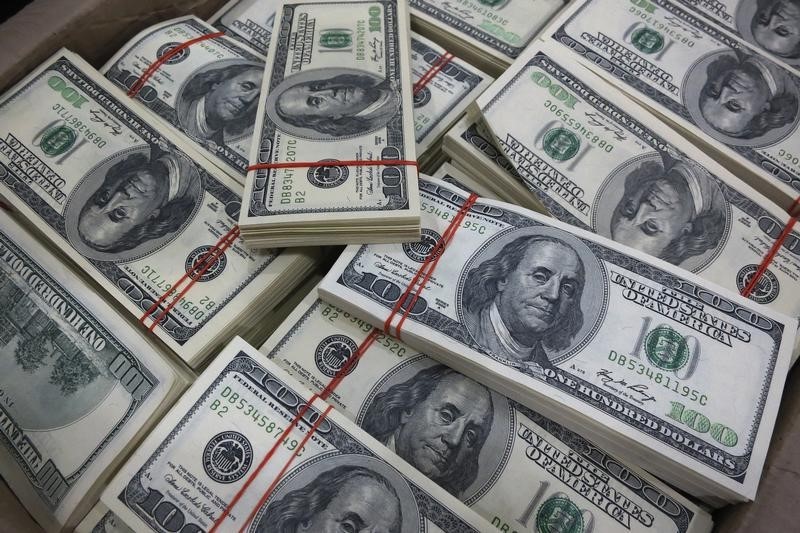By Geoffrey Smith
Investing.com -- The U.S. economy strengthened in the first quarter of 2021, as Covid-19-related lockdowns started to ease, allowing a partial recovery to take hold.
Government data released on Thursday showed gross domestic product grew at an annualized rate of 6.4% in the first quarter, up from 4.3% in the fourth quarter of 2020 and faster than consensus forecasts of a 6.1% rate.
The acceleration was due in large measure to the $1.9 trillion stimulus package approved by Congress earlier in the year that distributed a new round of stimulus checks to households. Real consumer spending grew at an annualized result of 10.7% as a result.
More up-to-date checks on the state of the economy also showed steady progress, with initial claims for jobless benefits inching down to a new post-pandemic low of 553,000 last week. However, the previous week's number was revised up by nearly 20,000 to 566,000. Continuing claims, which are reported with a one-week lag to initial ones, were effectively flat at 3.660 million.
The dollar and 10-Year Treasury yields ticked down on the news, as the market zeroed in on a below-forecast reading for a data series that is the Federal Reserve's favored metric for inflation. Core personal consumer expenditures, which track changes in consumer spending patterns more quickly than the official consumer price inflation index, rose at an annual rate of only 2.3% in the quarter, slightly below the 2.4% consensus.
On Wednesday, Federal Reserve Chairman Jerome Powell had batted away concerns that loose monetary policy and a strong economic rebound could soon lead to runaway inflation, saying that the current rise in prices and the factors behind it were "transitory".
Powell stressed again at his press conference that the economy "is still some way" from the Fed's goal of full employment, as he again shunned invitations to speculate on when the central bank will start to tighten its policy.
That focus on the labor market was reflected in Labor Department figures that showed a total of over 16 million people still claiming unemployment-related benefits under various state and federal programs. However, the pattern of progress was repeated again last week, with the number of total claimants dropping by nearly 846,000.
